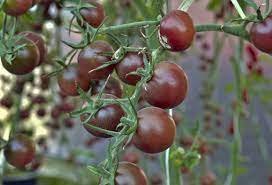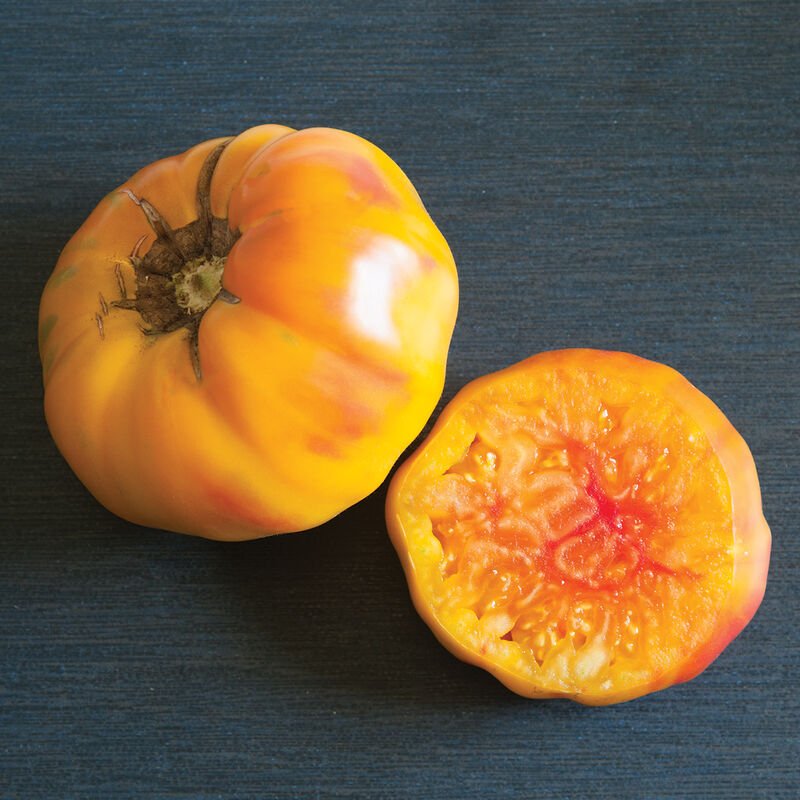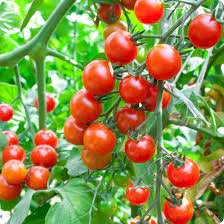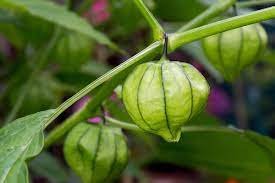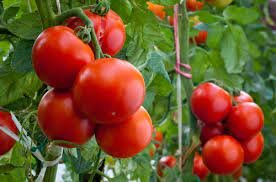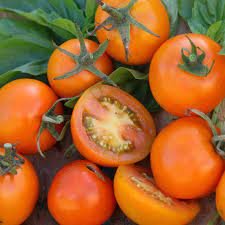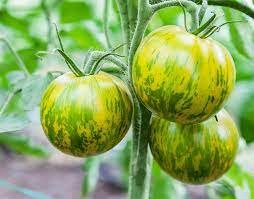TOMATO INFORMATION:
Determinate tomatoes or “BUSH types” bear a full crop all at once and only grow to a specific height. They are often good choices for container growing. Determinate types are preferred by commercial growers who wish to harvest a whole field at one time, or home growers interested in canning. Determinate varieties usually require little or no staking because of their stout and bushy nature.
Indeterminate tomatoes develop into VINES that continue producing indefinitely (indeterminately) or until killed by frost. Technically they are perennials and can grow for YEARS! They are preferred by growers who want to pick ripe fruit consistently throughout the season. They will require staking or trellising and ideally, pruning.
“An heirloom tomato is an open-pollinated, non-hybrid heirloom cultivar of tomato. They are classified as family heirlooms, commercial heirlooms, mystery heirlooms, or created heirlooms. They usually have a shorter shelf life and are less disease resistant than hybrids. They are grown for various reasons: for food, historical interest, access to wider varieties, and by people who wish to save seeds from year to year, as well as for their taste.” - wikipedia
Hybrids or “FI” Hybrids are created when plant breeders cross-pollinate two different varieties. The purpose is to create an offspring that contains the best traits of the parents. Traits such as: bigger size fruit, extra sweetness, more yield, or better disease resistance. Cross-pollination is a natural process and can happen when plants are spaced close together. Saving the seeds from a Hybrid tomato, while they may sprout and grow, will revert to one of the genetic parent plants, which will probably be much different fruit than the hybrid. Hybrids are not the same as GMOs. We find it’s beneficial to grow a variety of hybrids and open pollinated types.
OP = Open Pollinated. Tomatoes are self-pollinating, meaning they have flowers that contain both the male and female parts. More than one plant is not needed for reproduction. The pollen falls within the flower to pollinate itself. That doesn't mean insects and wind aren't important, though! They can help pollinate self-pollinating plants; for example, when bees land on the flowers, the buzzing of their wings helps to shake the pollen into the flower. If bees or other winged insects do not have access to the tomato plants, it is recommended to shake the tomato branches while they are flowering or touch them with an electric toothbrush to encourage fruit production. Growing open pollinated tomatoes means you can save the seed, and expect the same tomato as the one you started with (provided they don’t cross pollinate with something else). Heirlooms are open pollinated strains that have been self pollinated for many years.
